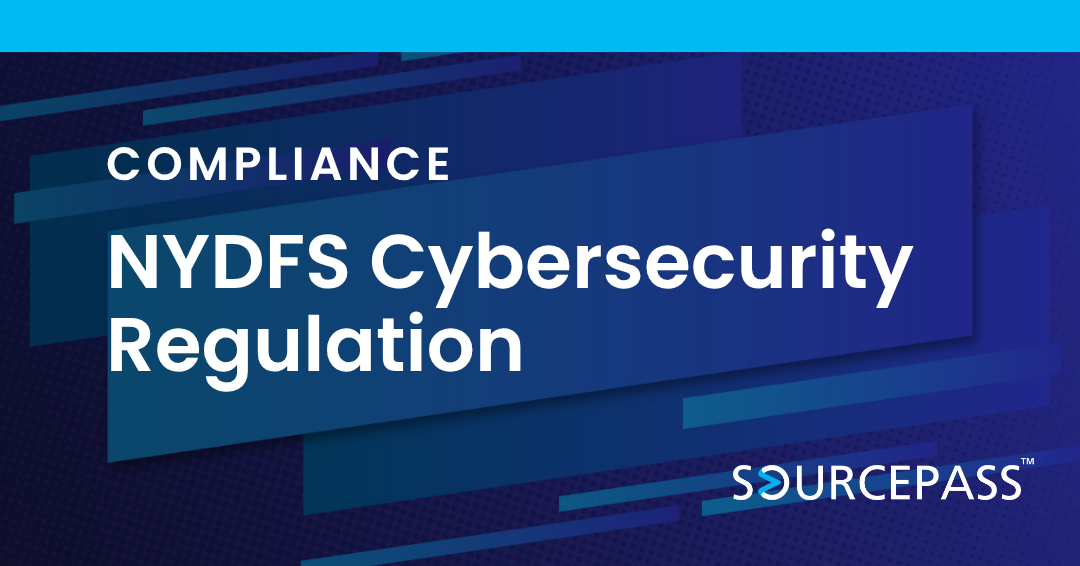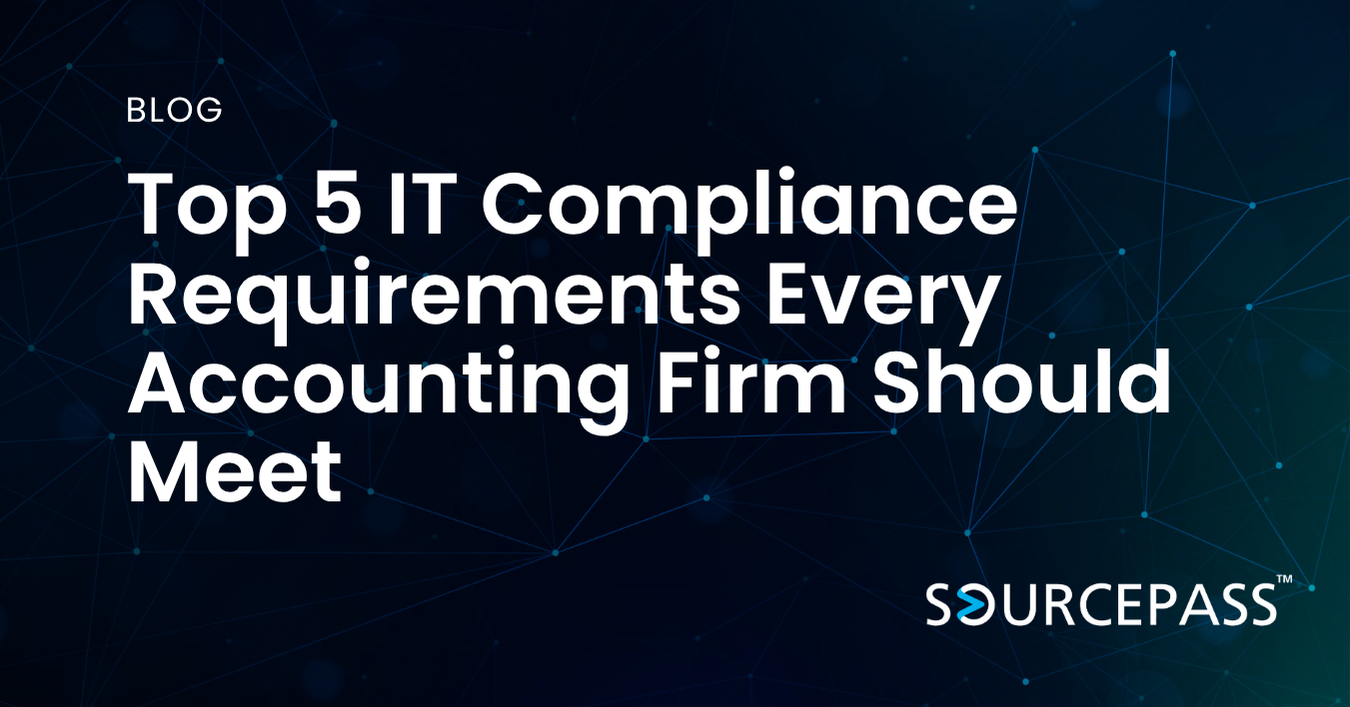Understanding the NYDFS Cybersecurity Regulation: Compliance & Cybersecurity Best Practices
Jul 14, 2025 Alex Davis Compliance Regulations 3 min read



Understanding the NYDFS Cybersecurity Regulation: Compliance & Cybersecurity Best Practices
In an era where cyber threats are growing in frequency and sophistication, financial institutions must prioritize cybersecurity to protect consumer data and maintain regulatory compliance. The New York Department of Financial Services (NYDFS) Cybersecurity Regulation (23 NYCRR 500) establishes strict cybersecurity requirements for financial services companies operating in New York.
This article will explore:
- What the NYDFS Cybersecurity Regulation is
- Industries affected
- Compliance requirements and key components
- How IT and cybersecurity teams can ensure compliance
What is the NYDFS Cybersecurity Regulation (23 NYCRR 500)?
The New York Department of Financial Services (NYDFS) introduced 23 NYCRR 500 in 2017 as a cybersecurity regulation designed to protect financial institutions and consumers from cyber threats. The regulation mandates that covered entities:
- Establish a comprehensive cybersecurity program
- Implement risk-based security measures
- Conduct regular audits and compliance reporting
- Notify NYDFS within 72 hours of a cybersecurity incident
NYDFS 23 NYCRR 500 is considered one of the strictest cybersecurity regulations in the financial sector, often compared to Sarbanes-Oxley (SOX), the NAIC Model Law, and the GDPR.
Industries Affected by NYDFS 23 NYCRR 500
The regulation applies to financial institutions operating under NYDFS supervision, including:
- Banks & Financial Institutions
-
- Commercial and investment banks
-
- Trust companies
-
- Mortgage lenders and servicers
- Insurance Companies & Brokers
-
- Life, health, and property insurers
-
- Insurance agencies and adjusters
- Investment & Asset Management Firms
-
- Hedge funds and private equity firms
-
- Investment advisors and financial planners
- Cryptocurrency & FinTech Companies
-
- Businesses operating under NYDFS BitLicense
-
- Payment processors, lending platforms, and digital wallets
- Third-Party Service Providers (TPAs & IT Vendors)
-
- Managed Service Providers (MSPs) and IT consultants handling financial data
-
- Cloud computing providers that store customer financial information
Any organization licensed or regulated by NYDFS must comply regardless of size—including small financial institutions, startups, and FinTech firms.
Key Compliance Requirements & Components
To comply with NYDFS 23 NYCRR 500, organizations must implement a multi-layered cybersecurity framework that includes risk assessments, access controls, monitoring, and incident response.
1. Cybersecurity Program (500.02)
- Develop a formal cybersecurity policy approved by senior leadership.
- Implement a risk-based approach to cybersecurity.
- Ensure continuous monitoring, testing, and reporting.
2. Chief Information Security Officer (CISO) Requirement (500.04)
- Appoint a CISO to oversee cybersecurity policies and risk assessments.
- Submit annual cybersecurity reports to the board and NYDFS.
3. Risk Assessments (500.09)
- Conduct regular cybersecurity risk assessments to identify vulnerabilities.
- Update security measures based on risk assessment findings.
4. Data Access & Encryption Requirements (500.15)
- Encrypt sensitive data at rest and in transit.
- Implement Role-Based Access Controls (RBAC) to limit exposure to critical data.
- Enforce Multi-Factor Authentication (MFA) for remote access.
5. Cybersecurity Training & Awareness (500.14)
- Train employees on phishing prevention and social engineering threats.
- Conduct regular security awareness programs.
6. Continuous Monitoring & Penetration Testing (500.05, 500.06)
- Deploy intrusion detection systems (IDS) and endpoint monitoring.
- Conduct annual penetration testing and vulnerability assessments.
7. Third-Party Vendor Security (500.11)
- Ensure third-party vendors comply with NYDFS cybersecurity standards.
- Require vendors to provide cybersecurity risk assessments.
8. Incident Response & Breach Notification (500.16, 500.17)
- Establish a formal Incident Response Plan (IRP).
- Notify NYDFS within 72 hours of a cybersecurity breach.
- Conduct forensic analysis and remediation after an attack.
9. Multi-Factor Authentication (MFA) (500.12)
Enforce MFA for:
- Remote access to internal systems
- Accessing sensitive financial data
- Any privileged account login
10. Annual Certification of Compliance (500.17)
- Submit a compliance certification report to NYDFS by April 15 each year.
- Maintain records of cybersecurity programs and risk assessments.
How IT & Cybersecurity Teams Can Ensure Compliance
For IT and cybersecurity professionals, meeting NYDFS 23 NYCRR 500 standards requires:
- Implementing a Secure IT Infrastructure
-
- Use next-gen firewalls, endpoint detection, and SIEM solutions.
-
- Apply zero-trust security principles to restrict unauthorized access.
- Automating Compliance & Monitoring
-
- Deploy Security Information and Event Management (SIEM) tools.
-
- Use automated compliance tracking solutions to meet audit requirements.
- Conducting Regular Risk Assessments & Testing
-
- Perform penetration tests and vulnerability scans at least annually.
-
- Simulate ransomware and phishing attack scenarios to test response plans.
- Strengthening Identity & Access Management (IAM)
-
- Enforce least privilege access policies for financial data.
-
- Require MFA for all employees, vendors, and privileged accounts.
- Creating a Robust Incident Response Plan (IRP)
-
- Develop automated response playbooks for ransomware, DDoS, and insider threats.
-
- Implement real-time forensic analysis tools.
- Securing Third-Party Vendors
-
- Require vendors to provide cybersecurity attestations.
-
- Use contractual agreements to enforce compliance.
Penalties for Non-Compliance
Failure to comply with NYDFS 23 NYCRR 500 can result in:
- Regulatory fines ranging from thousands to millions of dollars.
- Loss of NYDFS licensing, preventing companies from operating in New York.
- Lawsuits and reputational damage from security breaches.
Recent NYDFS Cybersecurity Enforcement Cases:
- EyeMed (2022) - $4.5M Fine
-
- Violated MFA and access control policies, leading to a phishing attack.
- First American Title (2021) - $1M Fine
-
- Exposed hundreds of thousands of customer records due to poor vulnerability management.
How NYDFS 23 NYCRR 500 Compares to Other Cybersecurity Laws
|
Regulation |
Primary Industry |
Key Focus Areas |
Breach Notification |
|
NYDFS 23 NYCRR 500 |
Financial Services |
Risk Management, MFA, Vendor Security |
72 Hours |
|
Sarbanes-Oxley (SOX) |
Public Companies |
Financial Reporting Security |
No |
|
CCPA |
All Businesses (CA) |
Consumer Data Privacy |
30-45 Days |
|
GDPR |
Global |
Data Privacy & Security |
72 Hours |
Conclusion
The NYDFS Cybersecurity Regulation (23 NYCRR 500) is a critical compliance requirement for financial institutions, ensuring strong data security, breach response, and risk management.
To achieve compliance, organizations must:
- Implement a cybersecurity program and risk assessments
- Enforce access controls and encryption
- Conduct continuous monitoring and penetration testing
- Report breaches within 72 hours
As cyber threats increase, compliance with NYDFS 23 NYCRR 500 is not just about avoiding penalties—it’s about protecting financial institutions and consumer trust in an ever-evolving digital world.
Subscribe To
Sourcepass Insights
Sourcepass Insights
Stay in the loop and never miss out on the latest updates by subscribing to our newsletter today!


